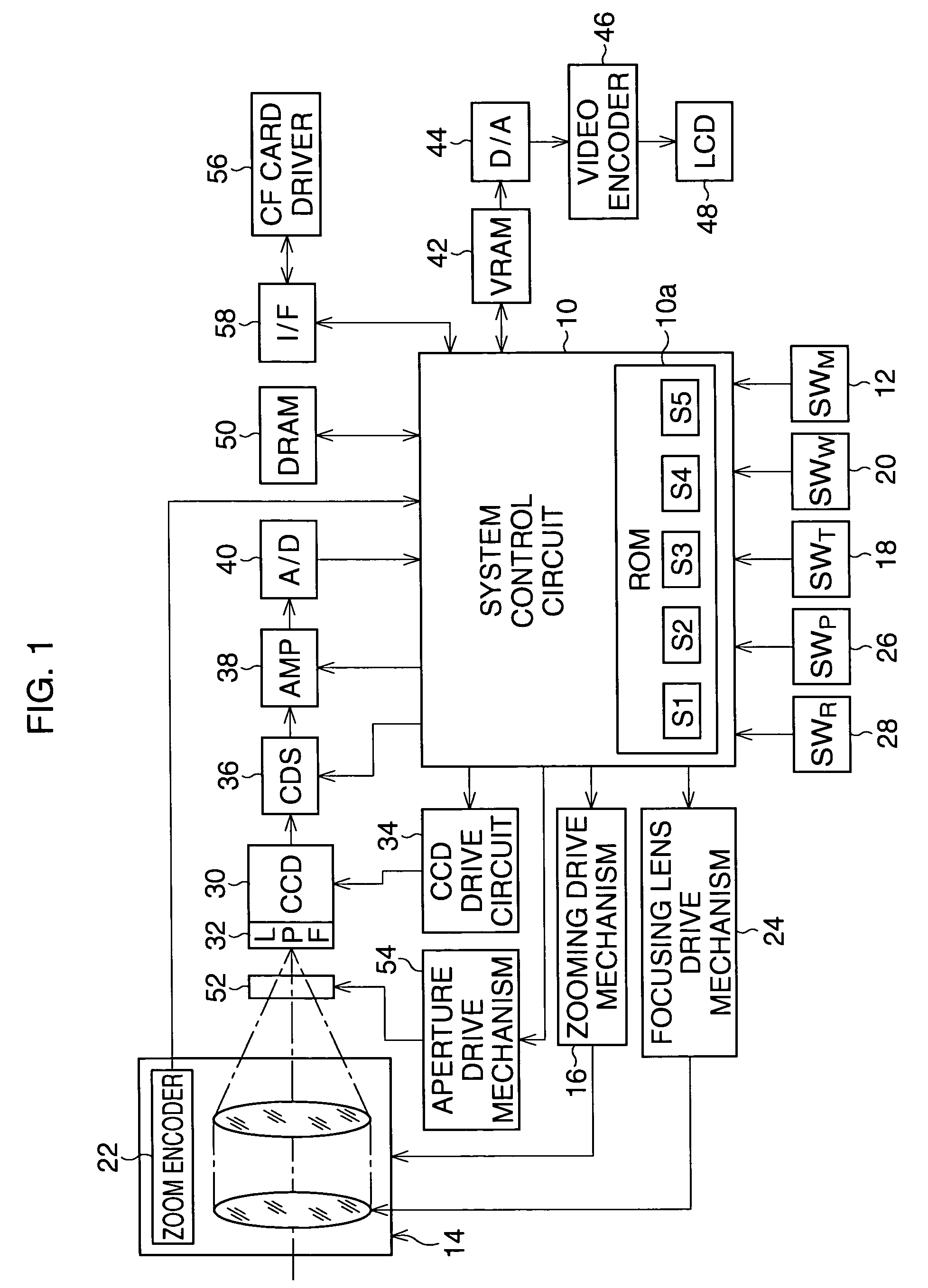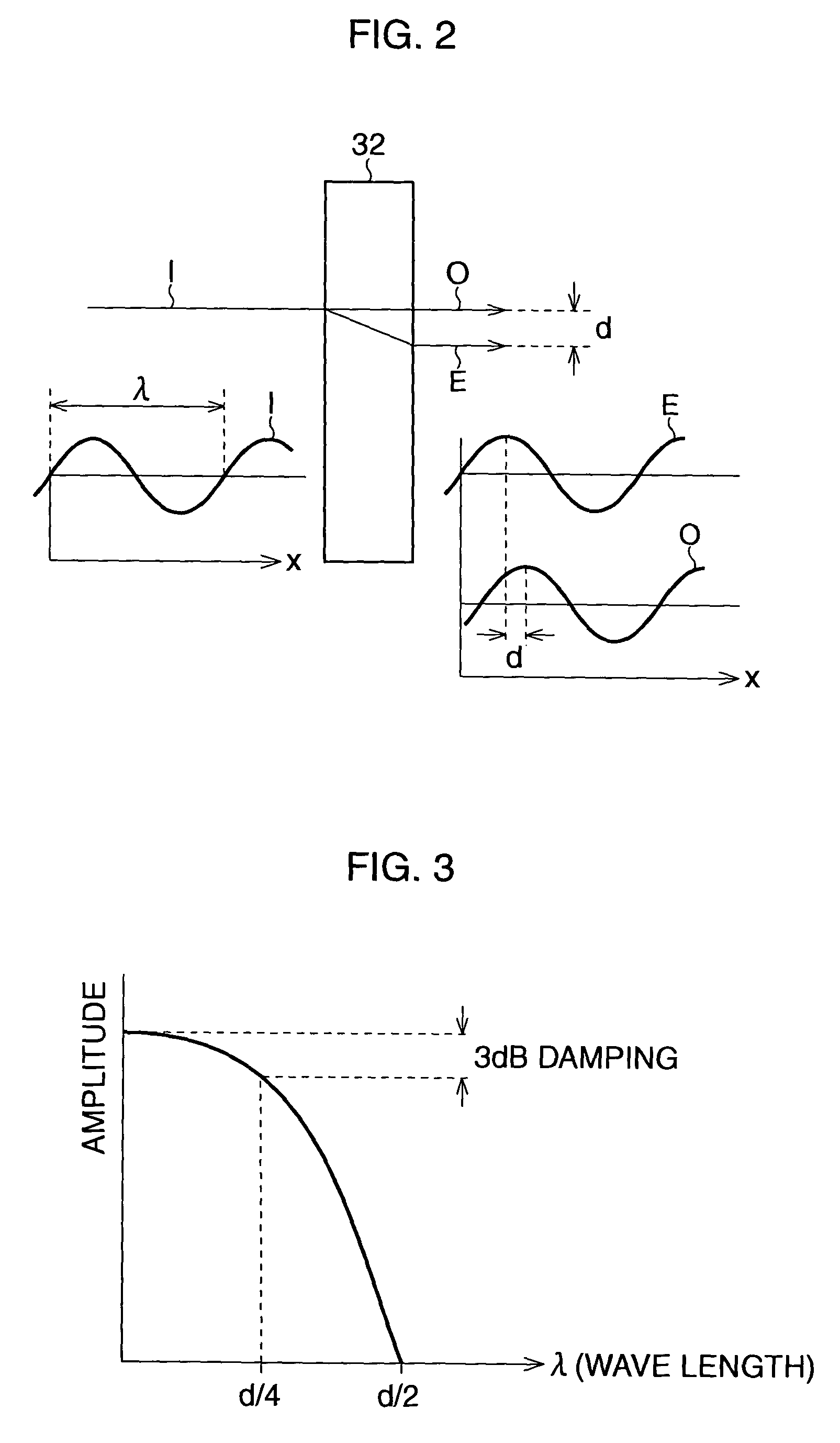Digital camera
a digital camera and camera body technology, applied in the field of digital cameras, can solve the problems of limiting requiring the setting of the camera-shake limit, and restricting the degree of freedom in design for the electronic-charge accumulation time of the digital camera
- Summary
- Abstract
- Description
- Claims
- Application Information
AI Technical Summary
Benefits of technology
Problems solved by technology
Method used
Image
Examples
first embodiment
[0027]FIG. 1 shows a block diagram of a digital camera to which the present invention is applied. In the digital camera, a system control circuit 10 is provided to control the digital camera as a whole. The system control circuit has a micro-computer for controlling a CPU, a ROM for storing constants and a program for performing various kinds of routines, a RAM for temporarily storing data and so on, and an I / O interface.
[0028]The system control circuit 10 has a main switch (SWM) 12, by which a sleep mode or a photographing mode is selected. Namely, when a battery (not shown) is mounted in the digital camera, the system control circuit 10 is operated in the sleep mode (i.e., a minimum power consumption state), so that it is monitored at a predetermined time interval only whether the main switch 12 is turned ON. When the main switch 12 is turned ON, the mode is changed from the sleep mode to the photographing mode, a photographing process routine is executed by the system control cir...
second embodiment
[0088]Note that, in the second embodiment, the gain of the amplifier 38 is controlled in such a manner that a moving picture is indicated with a predetermined brightness on the LCD panel 48, while the LCD panel indication process routine is executed in Step 801.
[0089]In the above embodiments, the electronic-charge accumulation-time is controlled using an electronic shutter operated in a solid state imaging device such as a CCD. Conversely, in a case of a digital camera in which a mechanical shutter is assembled similar to a silver halide film camera, the shutter speed is set in order to prevent a camera-shake from occurring, instead of an electronic-charge accumulation-time.
PUM
 Login to View More
Login to View More Abstract
Description
Claims
Application Information
 Login to View More
Login to View More - R&D
- Intellectual Property
- Life Sciences
- Materials
- Tech Scout
- Unparalleled Data Quality
- Higher Quality Content
- 60% Fewer Hallucinations
Browse by: Latest US Patents, China's latest patents, Technical Efficacy Thesaurus, Application Domain, Technology Topic, Popular Technical Reports.
© 2025 PatSnap. All rights reserved.Legal|Privacy policy|Modern Slavery Act Transparency Statement|Sitemap|About US| Contact US: help@patsnap.com



